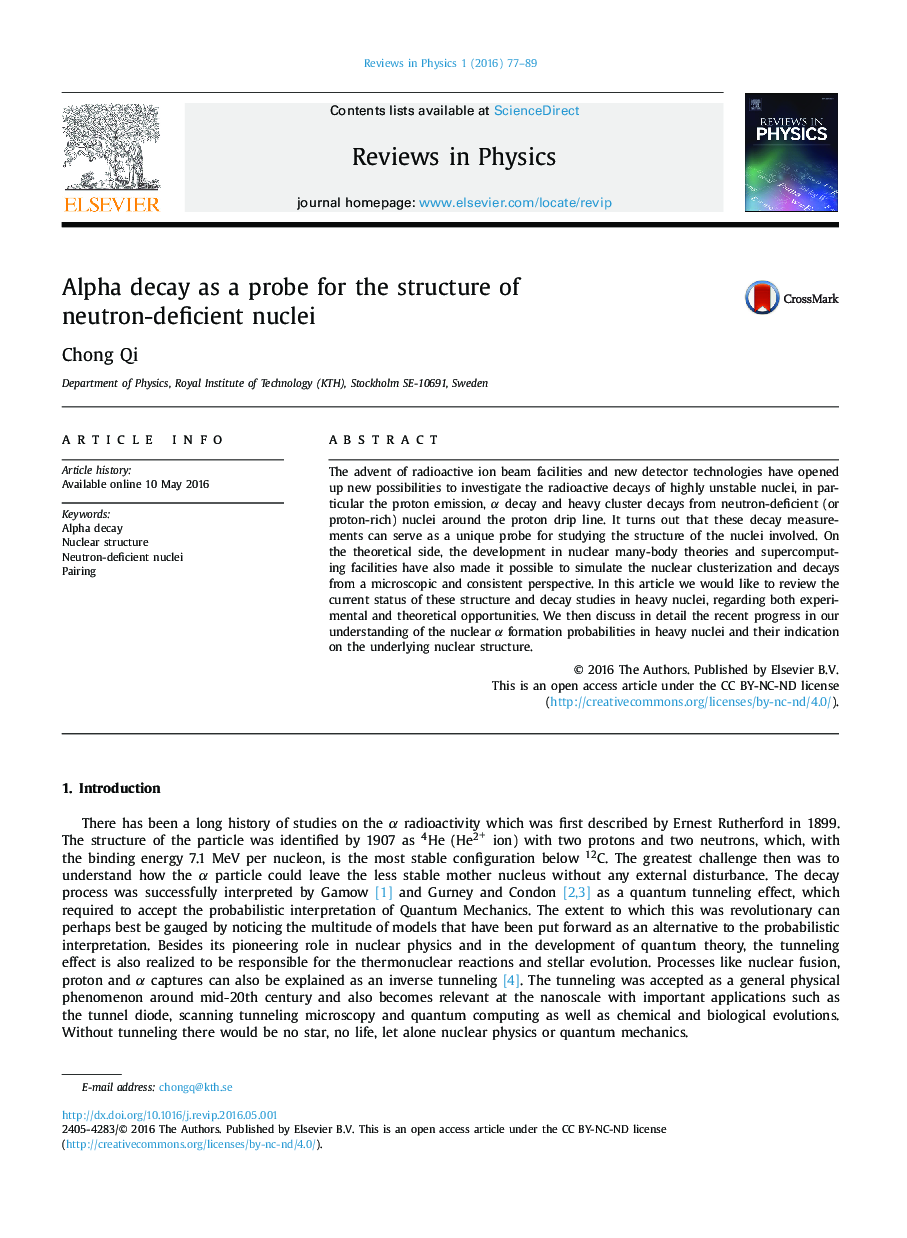| Article ID | Journal | Published Year | Pages | File Type |
|---|---|---|---|---|
| 1821882 | Reviews in Physics | 2016 | 13 Pages |
The advent of radioactive ion beam facilities and new detector technologies have opened up new possibilities to investigate the radioactive decays of highly unstable nuclei, in particular the proton emission, α decay and heavy cluster decays from neutron-deficient (or proton-rich) nuclei around the proton drip line. It turns out that these decay measurements can serve as a unique probe for studying the structure of the nuclei involved. On the theoretical side, the development in nuclear many-body theories and supercomputing facilities have also made it possible to simulate the nuclear clusterization and decays from a microscopic and consistent perspective. In this article we would like to review the current status of these structure and decay studies in heavy nuclei, regarding both experimental and theoretical opportunities. We then discuss in detail the recent progress in our understanding of the nuclear α formation probabilities in heavy nuclei and their indication on the underlying nuclear structure.
